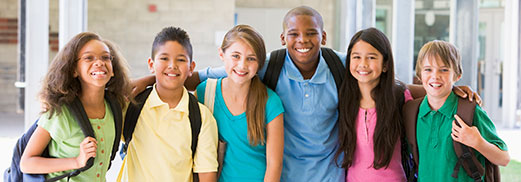Wastes—Educational Materials
Make A Difference Campaign for Middle School Students

Everything You Do Can Make a Difference
EPA’s “Make a Difference” campaign is aimed at educating and engaging you in resource conservation and environmental protection. This campaign helps you make informed decisions for protecting the environment in your day-to-day life. The following resources will inspire you to reduce, reuse, and recycle waste — to “make a difference” at home, at school, and in your community.
You will need Adobe Reader to view some of the files on this page. See EPA’s PDF page to learn more.
- Be Waste Aware – Waste Reduction Resources and Tools for Students (PDF)
(2 pp, 192K)
Provides online resources for learning more about municipal solid waste (also known as trash or garbage), as well as hazardous waste. These resources will help you better understand the type, amount, and impact of solid waste. - “Greenscaping” Your Lawn and Garden (PDF) (8 pp, 1.8MB) |
 (PDF) (8 pp, 313K)
(PDF) (8 pp, 313K)
Find out how to reduce the amount of yard waste in the waste stream by grasscycling, mulching, and composting. Learn how and what to compost. You can help change landscaping to “greenscaping” by using manual tools and fewer harmful pesticides to reduce waste, collecting rainwater for reuse, recycling used oil and tires from landscaping vehicles and equipment, and purchasing gardening products made from recycled materials. - Think Green Before You Shop Infographic
Learn how to shop with the environment in mind. Your purchasing choices can conserve resources, save energy, and prevent waste. Buy products that are energy efficient, used or reusable, made with recycled content, recyclable, and have no packaging or reduced packaging. - The Life Cycle of a CD or DVD (PDF) (2 pp, 400K) |
 (PDF) (2 pp, 1.1MB)
(PDF) (2 pp, 1.1MB)
View the life cycle of a CD or DVD — from obtaining raw materials through manufacture, packaging, distribution, useful life, and disposal. Learn what life cycle management is and why it is important. Discover some crafts and other ways to reuse CDs and DVDs. - Secret Life of a Smart Phone
View the life cycle of a cell phone — from obtaining raw materials through manufacture, packaging, distribution, useful life, and disposal. Learn what life cycle management is and why it is important. Find suggestions of ways to reuse or recycle your phone and accessories when you’re finished with them. View Secret Life of a Smart Phone: Infographic - The Life Cycle of a Soccer Ball (PDF) (2 pp, 4.3MB) |
 (PDF) (2 pp, 6.2MB)
(PDF) (2 pp, 6.2MB)
View the life cycle of a soccer ball — from obtaining raw materials through manufacture, packaging, distribution, useful life, and disposal. Learn what life cycle management is and why it is important. Find suggestions of ways to reuse or recycle your old soccer ball and soccer gear when you’re finished with them. - Make a Difference in Your School - A How-to Guide for Engaging Students in Resource Conservation and Waste Reduction (PDF) (34 pp, 1.7MB)
This guide provides advice, ideas, and inspiration to teachers, school administrators, and others for planning a hands-on environmental day at school. - The New Wave in Electronics: eCycling (PDF) (2 pp, 388K)
Learn how to dispose of old or unwanted electronic equipment without throwing it away. You will find lists electronic items that can be recycled and general information about how and where to eCycle them. - Pack a Waste-Free Lunch
Learn how to reduce, reuse, and recycle items in your school lunch and how to organize a waste-free lunch day at your school. - Science Fair Fun—Designing Environmental Science Projects (PDF) (24 pp, 990K) |
 (PDF) (16 pp, 220K)
(PDF) (16 pp, 220K)
Discover ideas and resources for developing environmental science fair projects, focusing on reducing, reusing, and recycling waste materials. There are sample projects and tips for conducting experiments. - Service Learning: Education Beyond the Classroom (PDF) (32 pp, 1.7MB) |
 (PDF) (32 pp, 410K)
(PDF) (32 pp, 410K)
See examples of how students across the country are gaining hands-on awareness of waste reduction, recycling, and composting, through solid waste service-learning projects. - Tools to Reduce Waste in Schools
Learn how your school and school district can reduce the amount of waste you generate. You’ll learn how to start a waste reduction program or expand an existing one. The guide will show you how your program can benefit your school, your community, and the environment by reducing, reusing, and recycling your waste. - You Can Make a Difference: Learn About Careers in Waste Management (PDF) (2 pp, 397K) |
 (PDF) (2 pp, 397K)
(PDF) (2 pp, 397K)
View information about career opportunities in waste management, including community service, student employment, internships, and advanced education.

Drag the recyclables off the conveyor belt and put them in the correct bins.
(NOTE: For optimal functionality, please access via Internet Explorer browser)

- Use products made with recycled materials
- Use energy-efficient light bulbs and rechargeable batteries
- Shop with cloth bags
- Reuse plastic bags, cups, containers, etc.
- Repair items instead of throwing them away.
- Compost your food and yard waste.
